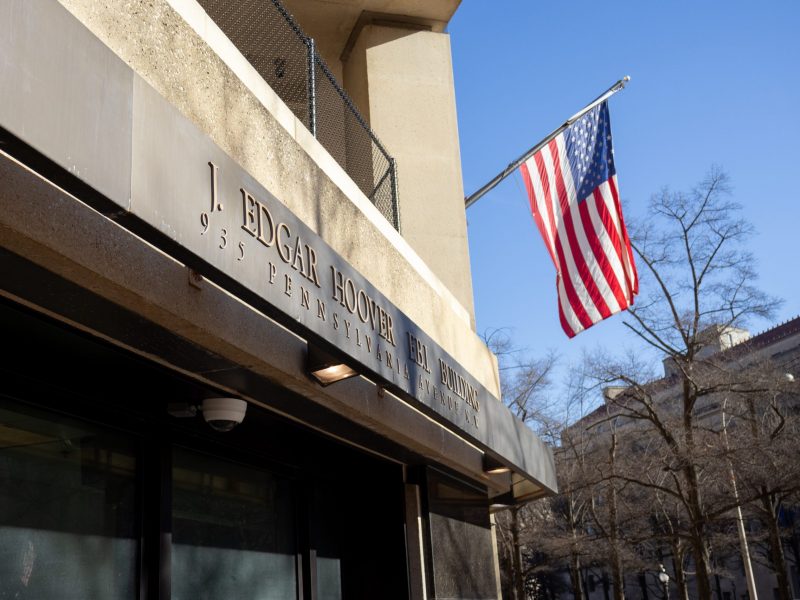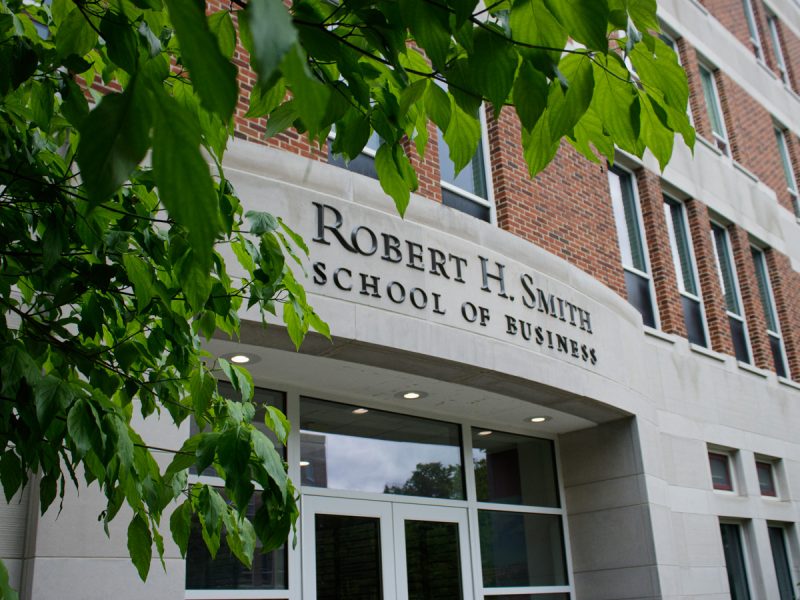By Lilly Roser and Hayden Smith
For The Diamondback
Students at the University of Maryland have added a personal touch to Stamp Student Union by choosing contemporary art pieces for the building for nearly two decades.
The Contemporary Arts Purchasing Program receives about $50,000 biannually for a cohort of students to purchase art for the walls of Stamp and diversify university art collections.
“Art purchasing and art collecting decisions are usually made at the president level,” Tara Youngborg, the program’s advisor and manager of Stamp Gallery and Studio A, said. “[This program] really goes against the grain of many other art collections, which tend to skew male and white.”
The arts purchasing program, which is nearing its 20-year anniversary at this university, was inspired by Wake Forest University’s student-driven art collection, Youngborg said.
Every other year, the program chooses a cohort of approximately six student applicants to select and purchase art to add to the collection, according to Youngborg.
“I think our administration really sees the value in having artwork that the student body can access really easily,” Youngborg said.
[UMD exhibition explores history of student activism for underrepresented groups]
According to Youngborg, each student cohort creates a manifesto, theme or statement of interest to decide what message they want their procured art to represent.
These gallery themes tend to remain applicable from year to year, Youngborg said.
“It’s always interesting when I’m talking about a piece that is from 2010 or 2011 … the students I’m talking to are like, ‘Oh, this is still really relevant, this is still something I’m thinking about right now,’” Youngborg said.
Previous cohorts have opted to purchase art centered around immigration, gun violence, climate change, gender identity and sexuality.
Isabella Chilcoat, a senior art history major who participated in the art purchasing program during the 2022-23 school year, said she enjoyed being a part of the program because she felt it would leave “a lasting impact for the better.”
During Chilcoat’s time in the program, she and her cohort took courses to learn about art markets, art purchasing and collecting, Chilcoat said.
According to Chilcoat, throughout the year, the students also went on field trips to galleries and art markets. On these trips, they would identify prospective works of art that they were interested in buying for the university.
Students in the program also meet with an advisory board made up of arts professionals, program alumni, Stamp administrators and professors at this university, who provide feedback on the students’ collecting interests and further suggestions to guide their purchases.
In April, each cohort creates a final proposal where they share six to 10 pieces of art that they hope to purchase with the advisory board.
Advisory board member Joshua Shannon, who is a contemporary art history and theory professor, described the process as “extremely student-led” and student centered.
Shannon, also the director of graduate studies, art history and archaeology at this university’s art history and archeology department, said the accessibility and location of Stamp Gallery encourages students passing through to observe and reflect on the artwork that the program participants select. This helps promote a stronger connection to students’ education, he added.
[UMD archive gives students a look into life, work of artist Alonzo Davis]
“There’s something there that catches their eye and makes them think a little bit about something in a way that connects them to their campus, connects them to ideas, connects them to their contemporary world, connects them to whatever all the issues that are in the collection,” he said.
Alumni of the program have become gallery directors and professional artists, Youngborg said. Others participated in the program solely because it was their passion, she added.
Emily Boa, a senior communication major who previously participated in the purchasing program, said she was taken seriously as a prospective art buyer when visiting galleries despite being a student.
The process of choosing art for the walls of Stamp felt “prestigious” and was a lot of fun, Boa said.
“It’s great that [this university] puts that money aside every other year for [the contemporary art purchasing program]. I think that generally, the arts are really underfunded in a lot of ways,” Boa said. “We were really grateful for the opportunity and that [this university] acknowledges how important art is to the students.”



